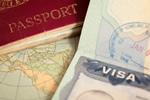- Home » Emigration Guides » Australia » Culture » Brief History Of Australia
Brief History Of Australia
 Brief History Of Australia
Brief History Of Australia
The Dutch were the first to explore the continent in the 1600's, even naming the northern and western coastal areas New Holland. However, no records of settlement were made. In 1770, Captain James Cook, a British naval captain and explorer, sailed the east coast of the country, and documented its worthiness as a colony of Britain. He called it New South Wales, and from this expedition, the plan to make the land a penal colony for Britain had begun.
18 years later, Captain Arthur Phillip led a settlement expedition to 'the great southern land', which included 11 ships of convicts. He landed in what is now known as Botany Bay, then moved his settlement to Sydney Cove, which is now the site of Circular Quay and the Opera House in Sydney.
Sydney began its growth following settlement, and soon, there were other penal colonies established throughout former New South Wales. South Australia was founded in 1836, Victoria in 1851, and the north-eastern state of Queensland in 1859. These dates showed when the colonies became independent of New South Wales, but were controlled by the British Commonwealth Crown.
One of the largest historical events in Australia's history was the Eureka Stockade. The gold rush of the 1850's was blackened by a miner's rebellion against mining tax. This was the first evidence of civil disorder in the new colony.
In 1901, the colonies of Australia held a referendum, and became the Federation of the Colonies, or the nation of Australia (a title given in 1907). The Australian Capital Territory was established, and Canberra was chosen as the capital of the new federation. However, Melbourne was the temporary capital city until Canberra was built in 1927. Being part of the British Empire, Australians were called to fight in both World War One and World War Two. Hundreds of thousands of Australians died in the horrific battles across the globe.
Following World War Two, Australia experienced a large influx of European immigrants. This led to the beginning of Australia's famous 'cultural melting pot' image. Unfortunately, the White Australia Policy kept Asian and non-white emigrants from entering the country. This all changed in the 1970's though, as Australia's government overturned the policy, opening its borders to any emigrant looking to settle in Australia (especially with the atrocities of Vietnamese, Korean, and Cambodian unrest in Asia).


